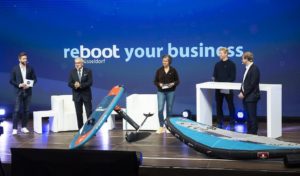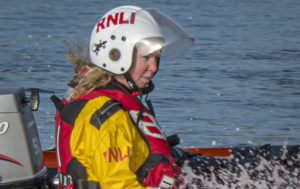Industry focus: is the future all about electric?
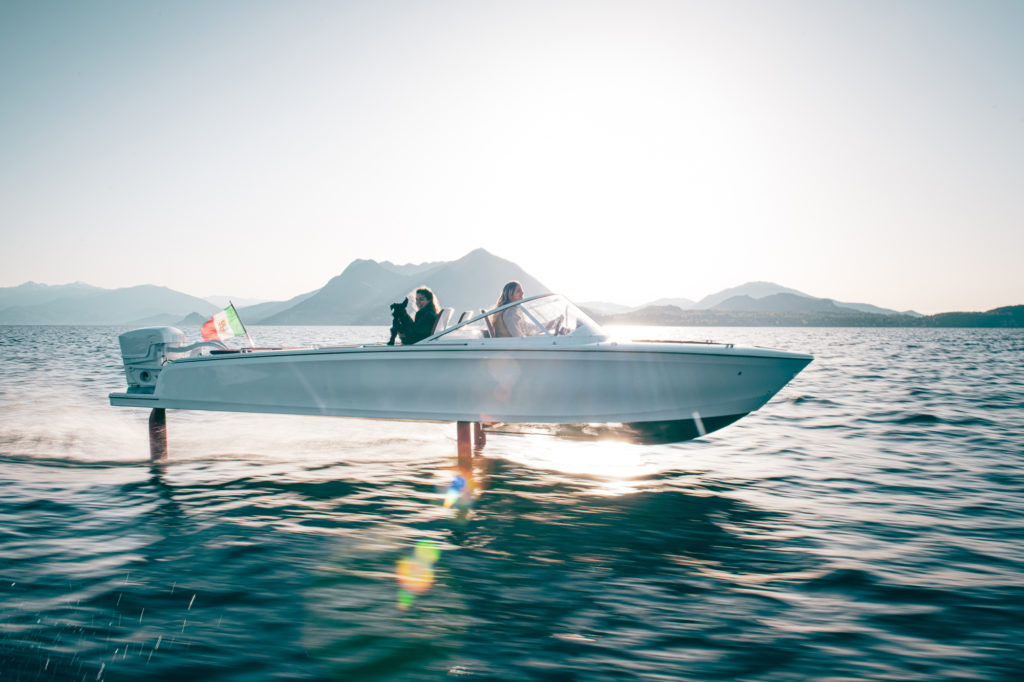
An entire area reserved for electric boats at the Cannes Yachting Festival, Group Beneteau planning its fully electric Delphia range, Candela’s hydrofoiling craft making headlines around the world and sales records in Scandinavia… the electric boat market is no longer on the horizon, it’s hitting the mainstream. Jeff Butler, founder of Plug Boats, examines how the electric revolution is shaping up and how all sections of the industry could benefit…
Growing at an increasing pace, the electric marine market now has wider motor selection, improved batteries and keen interest from old and new boating consumers on a quest for a cleaner, quieter on-water experience.
“We’re getting more enquiries all the time from yards of all sizes who are, in turn, getting enquiries from their customers about going electric,” says Chris Fower, sales and marketing director of Fischer-Panda UK.
The company may be best known for generators but it has also been in the electric propulsion business for more than two decades. Fischer-Panda (FP) is the UK distributor for Mastervolt electronics and batteries and offers a single system solution.
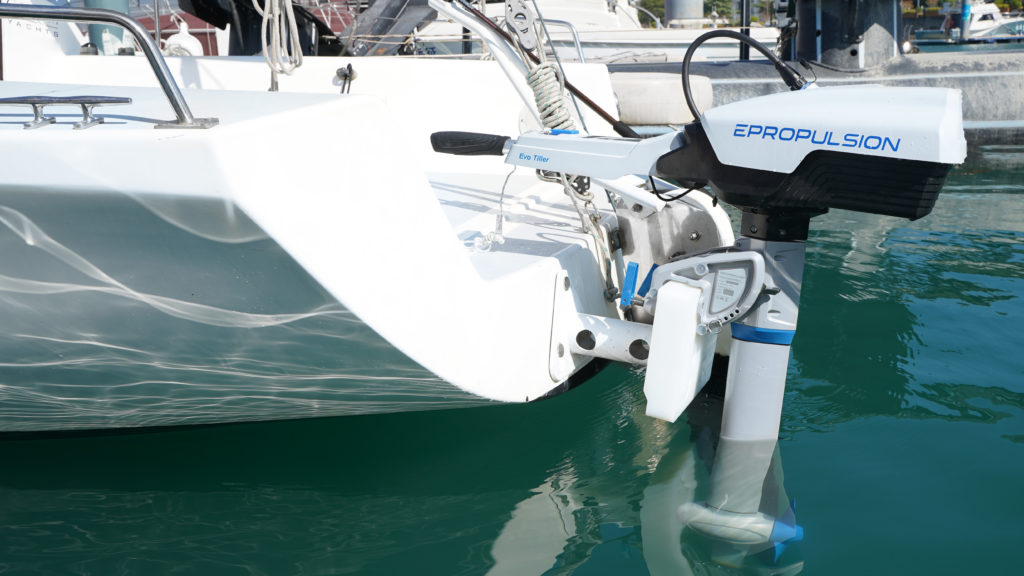
According to FP, ease of installation is key for clients. “One of the common reactions we get is a bit of a pleasant surprise that electric and/or hybrid drives are not as different from petrol or diesel as some might have thought. The engineering and mechanical knowledge they have used for years is easily applied to electric,” says Fower.
Different manufacturers concentrate on different configurations. The Fischer-Panda line-up features inboard electric and hybrid systems as well as sailpods. Oceanvolt has inboards and saildrives, ePropulsion manufactures sailpods and outboards while Torqeedo, Bellmarine and others offer products across the full spectrum.
“We are seeing a definite increase in interest in our electric and hybrid electric drive systems, both for newly built vessels or retrofitting, which not only provide up to 100 per cent emission-free cruising but many other cost and efficiency benefits,” Fower says.
When it comes to retrofitting, sailpods can be among the easiest to install. In many cases the motors have been specifically designed to fit into the hull openings where diesel saildrives are operating. The same is true of many saildrives, where the electric motors and batteries have been designed to marry with existing lower units and propellers originally powered by diesel.
Electric motors for sailboats – inboard shaftdrive setups as well as saildrives or pods – offer another unique capability of e-drives. When the boat is moving under wind power, the motor can be switched to become a turbine and thus generate electricity to recharge the battery.
Oceanvolt was a 2017 DAME Design Award category winner for its ServoProp hydrogenerating variable pitch saildrive, and the ability to recharge at sea is available on inboards or saildrives by Torqeedo, Bellmarine and several others. Last year ePropulsion also joined Watt&Sea in offering hydrogeneration in electric outboards.
An electric outboard is the easiest refit for any type of boat and again, the range of possibilities here is increasing rapidly. In the past year two companies – Evoy of Norway and Vision Marine Technologies of Canada – have introduced electric outboards with more than 150 horsepower and at least one more is on the way from Denmark’s EP Technologies. Mercury Marine is also planning to launch five electric outboard models by 2023.
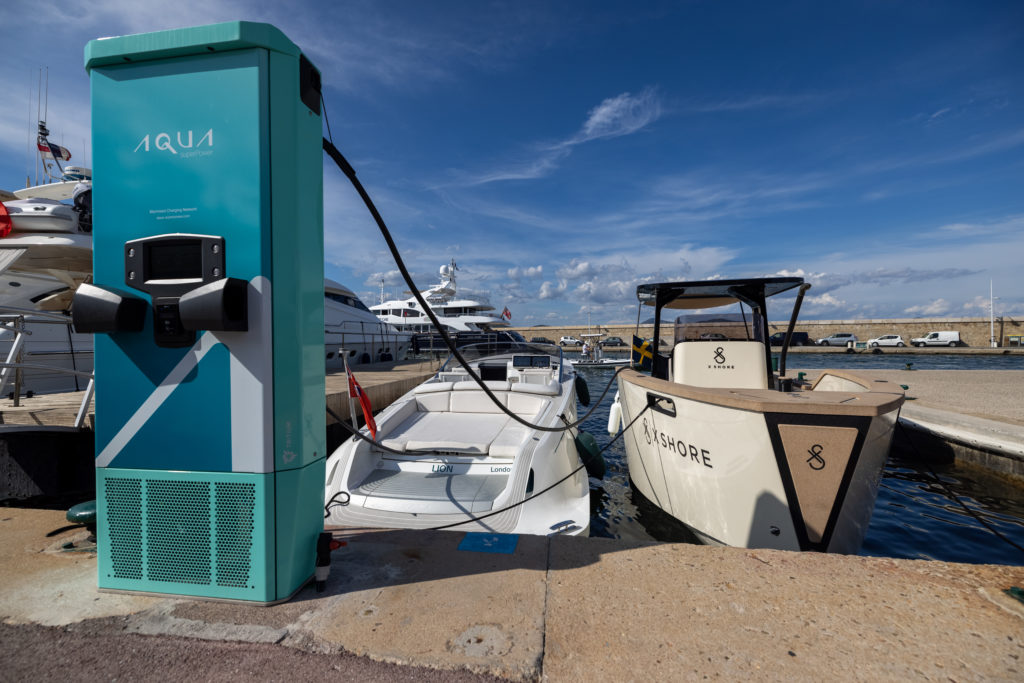
Charging requirements will likely prove key for the industry and consumer uptake. Alex Bamberg is chief executive officer of Aqua superPower, which has installed a handful of high capacity (up to 150kw) superchargers along the Cote d’Azur and Italian coastline. The company was recently awarded a grant to install five chargers on sites within the UK’s Plymouth Sound by March 2022 and says it is fielding enquiries from several marina groups.
“When you’re asking a consumer to make significant investment in an electric boat, you want to assure them they can have the charging that suits their lifestyle,” says Bamberg, who comes to the world of electric boating after 15 years in the electric vehicle world, as founder and MD of the UK’s Chargepoint Services.
Aqua superPower plans to install 15 more chargers in Europe by the end of 2021 with a further 120 going into the ground next year, though at £100,000 per unit the cost of high-speed, high-power chargers will be a major factor for most marinas.
Bamberg refers to ‘spontaneous use’ and ‘planned use’ in terms of consumer requirements. Those boaters who want the new higher speed electric boats to zip around on the water for a while, recharge and then go back out, will require high speed, high power DC chargers like those of Aqua superPower.
On the other hand, there are weekend electric boaters who are perfectly happy with existing AC marina pedestals and are comfortable making their plans around recharging that may take several hours. “But for getting people excited about electric boats, especially a younger market, the more aligned their recharging experience can be with liquid fuel, the easier their purchase decision,” says Bamberg.
MDL Marinas operates 20 sites and has partnered with Aqua superPower to install electric boat chargers at five of its UK marinas, becoming the first UK marina group to offer an electric boat charging solution. “We recognise that for the electric boat market to evolve, it is essential to develop a charging network offering rapid charging for smaller vessels, such as RIBs and sportsboats,” says Tim Mayer, MDL sales and marketing director.
“We are investing heavily for the good of the environment and the boating industry. We’re also looking forward to working with local authorities and other marine companies to further increase the electric boat charging infrastructure,” Mayer adds.
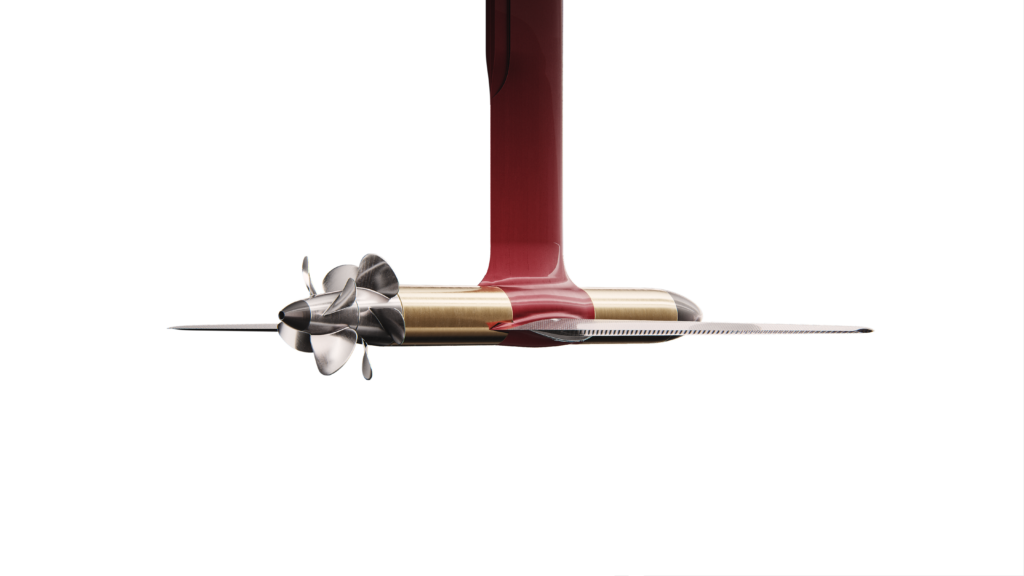
Hailed as the ‘Tesla moment’ of the marine industry by Forbes magazine, Sweden’s Candela-7 took a different approach to electric boat innovation. In order to make the energy produced by the battery pack last as long as possible, Candela set its sights on significantly reducing weight and friction. The result? The carbon-fibre structured C7; a 25ft sportsboat with integrated computer controlled hydrofoils capable of a range of 50nm at 22 knots.
Earlier this year, Candela launched the Candela C-8 to wide acclaim, selling 60 boats in the first four weeks off plans alone. The 28ft electric day cruiser is equipped with the Candela C-POD, the company’s proprietary electric drive train. Next in the pipeline is a 40ft foiling passenger ferry in Stockholm and the company says it plans to rapidly expand its model programme, with a larger leisure boat following on from the R&D gathered.
A trickle-down effect is also likely to pay off in other parts of the electric market. The E1 Series – the world’s first electric powerboat championship – is due to kick off in early 2023. In September 2021, the E1 Series unveiled its electric Racebird powerboat with Simrad joining up as the official marine electronics partner of the championship. Mike Fargo, EVP at Simrad, agrees the race boats will provide a helpful test bed. “That’s really the fundamental basis for this Simrad & C-MAP partnership with E1,” says Fargo. “We are committed to being part of the industry’s transition to electrification and, like any sport, you often learn the most through R&D at the elite levels.
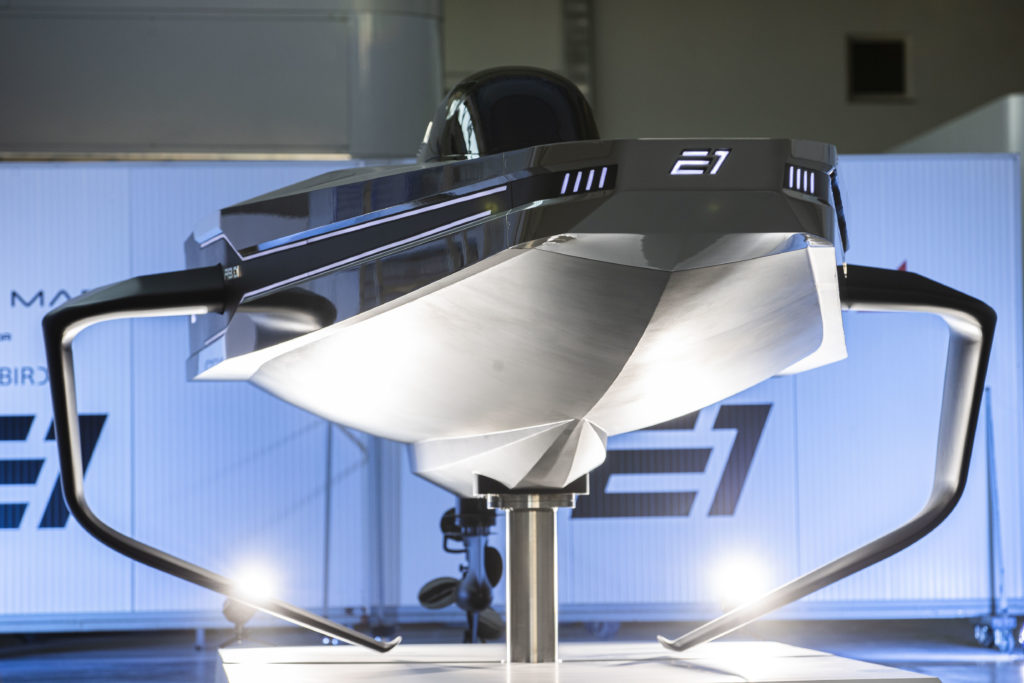
“Over the next year or so we will have to condense what could be years of R&D into one year to apply our systems in the RaceBird ready for the 2023 series and we look forward to being part of that development. Like so many of our Simrad products, which are often driven by technologies developed on superyachts and bigger complex systems, a lot of those innovations then make their way to our electronics used in smaller crafts and by everyday boaters.
“One area of clear technical interest is a heavy weighting of power efficiency and usage,” explains Fargo. “We might expect next generation, electric craft to aim to compete on improved vessel control, vessel efficiency and great situational awareness of boating activity, including efficiency measures. Our role will be, similar to our focus today, to provide navigation systems that extend into control and monitoring solutions, seamlessly integrated across the whole boat.
“With electrification, there will be lots of approaches from boat manufacturers and their partners to the power efficiency equation. As a leading marine electronics brand, we serve both the new boat customer, and the large installed base of boaters. Many of the benefits around great control, more efficient systems, with better consumption awareness – are also relevant in the existing boat park.”
Boating’s long history of mixing and matching hulls and motors for both new sales and retrofits, means that the rise of electric boats is likely to benefit everyone in the boating industry with a trickle-down effect from manufacturers and dealers to marinas, boatyards and maintenance.
If you have been considering the electric boating segment as ‘something you should look into’, there is no better time than now to gain a foothold in hands-on experience and build a reputation for expertise. From here on in, this market is only going to grow.
Jeff Butler is editor/publisher of Plugboats.com, the international journal of electric boats.


